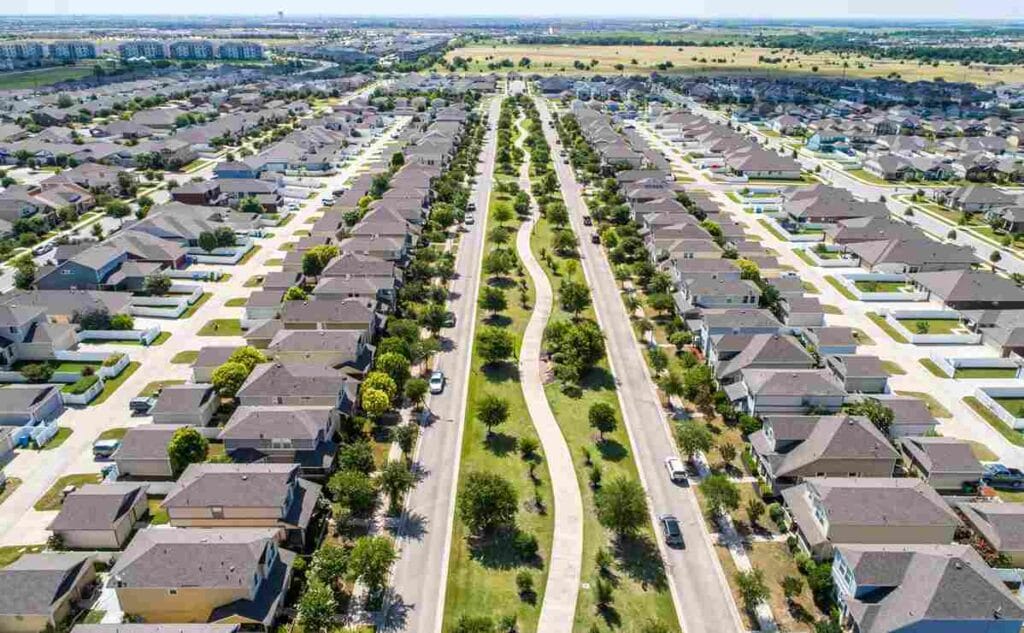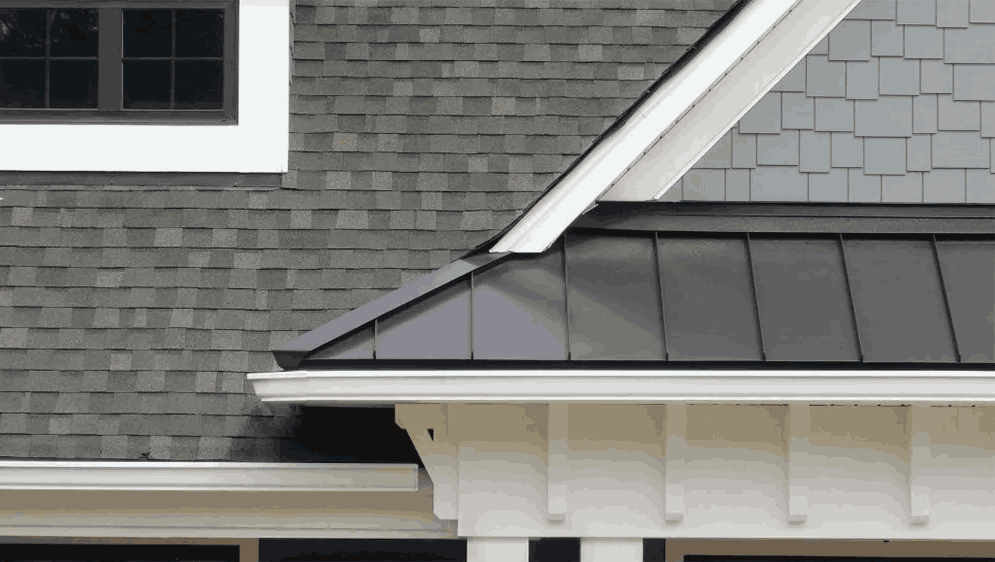
A soffit is the material designed for the underside of a roof overhang, bridging the gap between the exterior wall and the edge of the roof. It serves both functional and aesthetic purposes, contributing to the overall health and appearance of a house or building.
What Is a Soffit?
In construction and architectural terms, a soffit refers to the horizontal or sloped surface underneath the roof overhang. It’s typically located between the exterior wall and the fascia board, providing a finished look to the eaves and covering exposed rafters. Soffits are commonly found in both residential and commercial buildings, enhancing the structure’s, style, appearance and functionality.
Functions of a Soffit
-
Ventilation: Soffits help protect your home roofing system, often is vented to help facilitate air flow into the attic, regulating temperature that prevent condensation in hot summer months and moisture buildup in winter
-
Protection: Help keeping properly ventilated, protect the underside of the roof overhang, soffits protect rafters and attic spaces from weather elements, pests, and debris.
-
Aesthetic Appeal: Soffits provide a clean, finished look to the roofline, enhancing the building’s curb appeal with variety of colors and options for commercial and Homeowners.
🛠️ Common Soffit Materials
-
Vinyl: Durable, low-maintenance, and resistant to moisture and rot.
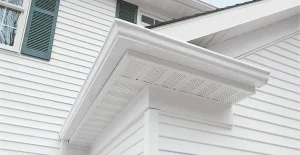
-
Aluminum: Lightweight, corrosion-resistant, and suitable for various climates.
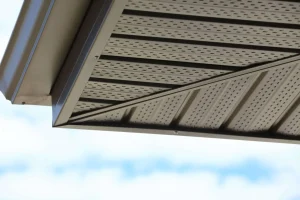
-
Wood: Offers a classic appearance but requires regular maintenance to prevent decay.
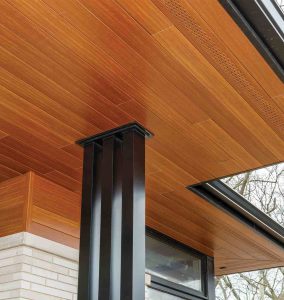
-
Fiber Cement: Combines durability with a wood-like appearance, incorporate fire-resistant features and cause pests to stay away.
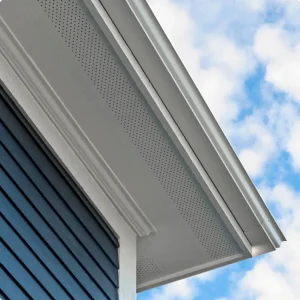
The choice of material type depends on key factors like climate, invest budgeting, and desired aesthetics.
Soffit vs. Fascia
While both soffit and fascia are integral and extend to the roof’s structure:
-
Soffit: Covers the underside of the roof overhang, aiding to ventilate and protecting rafters.
-
Fascia: The vertical board that runs along the roof’s edge, supporting gutters and shielding the roof’s edge from weather damage.
Together, they ensure the roof’s integrity and enhance the building’s beyond the exterior appearance.
Pros and Cons of Soffits
✅ Pros:
-
Enhanced Ventilation: Vented soffits promote necessary airflow, reducing attic moisture and preventing mold growth.
-
Protection Against Pests: Properly installed soffits deter insects and rodents from perforate and entering the attic.
-
Improved Energy Efficiency: By regulating attic temperature, soffits can contribute to lower energy bills.
-
Aesthetic Enhancement: Soffits provide a polished look to the roofline, increasing curb appeal.
❌ Cons:
-
Maintenance Requirements: Materials like wood require regular upkeep maintenance to prevent rot and decay problems.
-
Potential for Blockages: Vents can become clogged with debris, reducing effectiveness.
-
Installation Costs: Professional installation can be costly, especially for high or complex rooflines.
💰 Cost Estimates for Soffit Installation
The cost of soffit installation varies based on material, labor, and project complexity.
Material Costs per Linear Foot:
-
Vinyl: $5–$9
-
Aluminum: $8–$20
-
Wood: $1–$3
-
Composite: $1–$8
-
PVC/Plastic: $3–$7
Labor Costs:
-
Labor typically ranges from $5 to $20 per linear foot, depending on location and project complexity.
Total Project Cost:
-
For an average one-story home with 250 linear feet of soffit, total costs range from $1,500 to $5,000.
🧰 Maintenance Tips
-
Regular Inspections: Check for signs of damage, such as mildew, cracks, rot or pest infestations.
-
Cleaning: Remove snow, dry leaves, debris and clean vents to maintain proper airflow.
-
Prompt Repairs: Address any issues immediately to prevent further damage to the roof structure.
📌 Conclusion
Soffits play a crucial role in maintaining a building’s structural integrity, energy efficiency, and aesthetic appeal. Understanding their function and ensuring proper maintenance can prolong the lifespan of your roof and enhance your property’s value.

